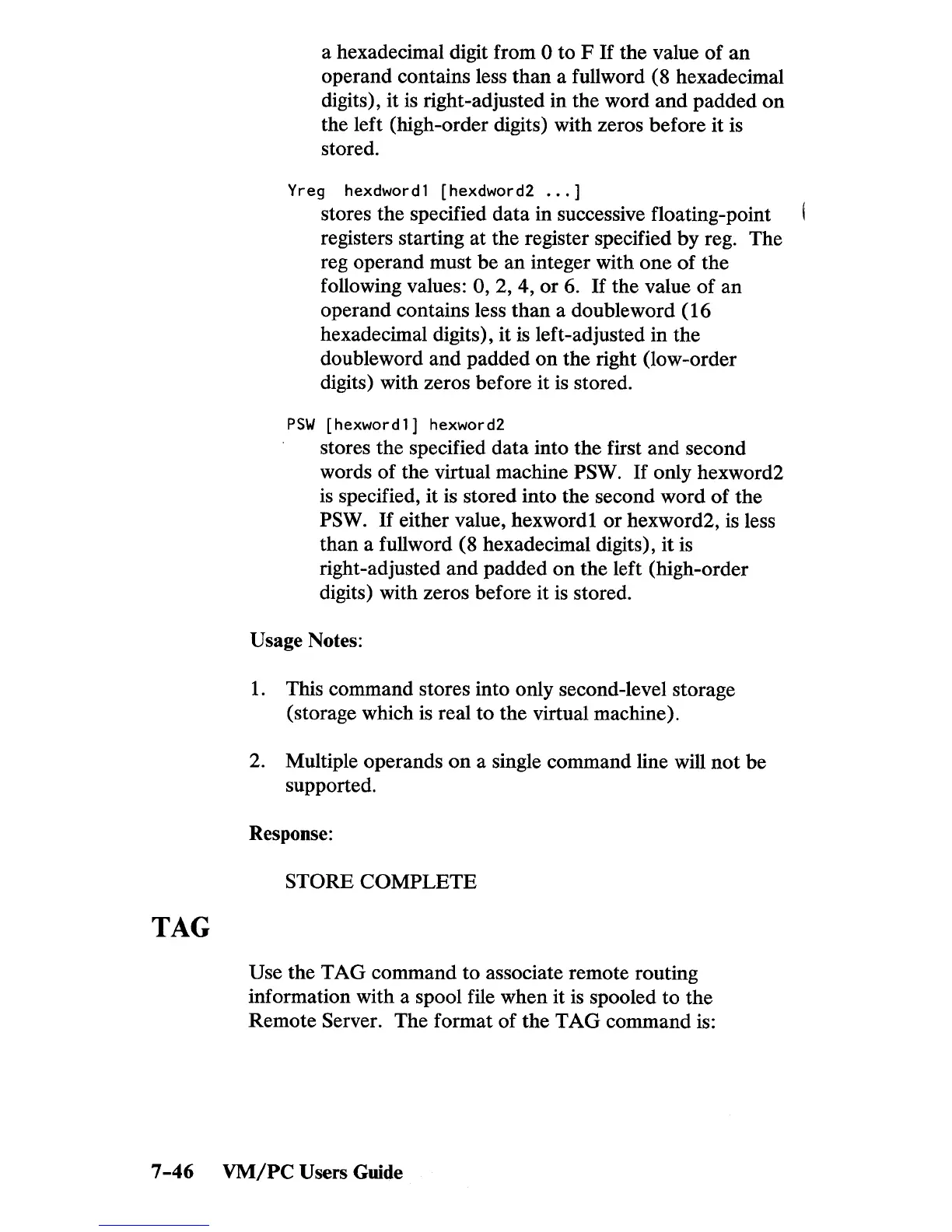TAG
a hexadecimal digit from 0 to F
If
the value
of
an
operand contains less
than
a fullword (8 hexadecimal
digits), it
is
right-adjusted in the word
and
padded
on
the left (high-order digits) with zeros before it is
stored.
Yreg hexdwordl [hexdword2
...
J
stores the specified data in successive floating-point
registers starting at the register specified by reg. The
reg operand must be an integer with
one
of
the
following values:
0, 2, 4,
or
6.
If
the value
of
an
operand contains less
than
a double word (16
hexadecimal digits), it
is
left-adjusted in the
doubleword
and
padded
on
the right (low-order
digits) with zeros before it is stored.
PSW
[hexwordl] hexword2
stores the specified data into the first
and
second
words of the virtual machine
PSW.
If
only hexword2
is
specified, it is stored into the second word
of
the
PSW.
If
either value, hexword1
or
hexword2, is less
than
a fullword (8 hexadecimal digits),
it
is
right-adjusted
and
padded
on
the left (high-order
digits) with zeros before it
is
stored.
Usage Notes:
1.
This command stores into only second-level storage
(storage which is real
to
the virtual machine).
2.
Multiple operands
on
a single command line will
not
be
supported.
Response:
STORE
COMPLETE
Use the
TAG
command to associate remote routing
information with a spool file when it
is
spooled to the
Remote
Server. The format
of
the
TAG
command is:
7-46
VM/PC
Users Guide

